Now I understand your point!
I guess, and therefore I will do it in such a way like you showed in your second photo, if your walls are high enough.
We have a situation already with the interior walls aft of the compartments and storage rooms, where definitely the walls have to be adjusted with notches (red arrows).
OK, these are the deck beams and not the carlings....
you can also see that all of my walls will reach the ceiling and ending at the height of the top edge of the beams (green arrows)
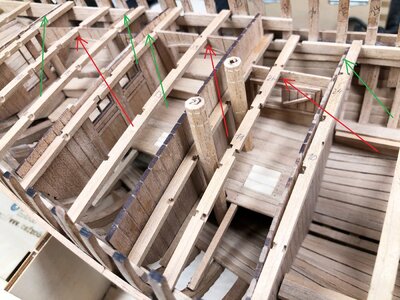
This one is a photo of my Bonhomme Richard interior walls, where we have a similar situation with the notches for the beams
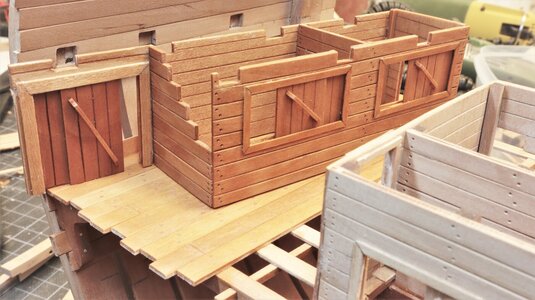
My idea is the following:
When the old shipwrights built such a ship, they installed first the beams to get a rigged structure, afterwards they would have installed the carlings (CAF calls them stringers) and wedges in order to get a basis for the deck planking. After the deck was layed, than they started to install the interior walls made out of single boards - so I am pretty sure, that they had the possibility as much as possible that the walls are so high, that they as close as possible to the ceiling.
This interior deck of the Coureur is partly under the waterline, so I guess, that most of these walls are really fixed twoards the ship structure and not removable.
I am refering here to the fact, that on bigger ships the interior walls (above waterline) were partly or often removable, in order to reduce the possibility of wooden splinters by a gunball hit during combat action...
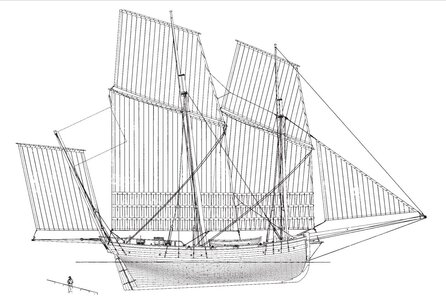
I guess, and therefore I will do it in such a way like you showed in your second photo, if your walls are high enough.
We have a situation already with the interior walls aft of the compartments and storage rooms, where definitely the walls have to be adjusted with notches (red arrows).
OK, these are the deck beams and not the carlings....
you can also see that all of my walls will reach the ceiling and ending at the height of the top edge of the beams (green arrows)

This one is a photo of my Bonhomme Richard interior walls, where we have a similar situation with the notches for the beams

My idea is the following:
When the old shipwrights built such a ship, they installed first the beams to get a rigged structure, afterwards they would have installed the carlings (CAF calls them stringers) and wedges in order to get a basis for the deck planking. After the deck was layed, than they started to install the interior walls made out of single boards - so I am pretty sure, that they had the possibility as much as possible that the walls are so high, that they as close as possible to the ceiling.
This interior deck of the Coureur is partly under the waterline, so I guess, that most of these walls are really fixed twoards the ship structure and not removable.
I am refering here to the fact, that on bigger ships the interior walls (above waterline) were partly or often removable, in order to reduce the possibility of wooden splinters by a gunball hit during combat action...







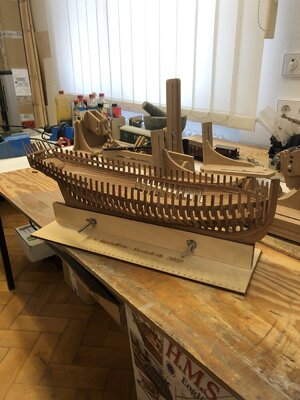
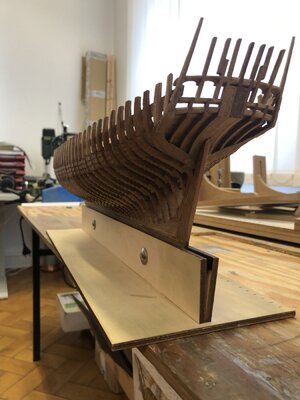
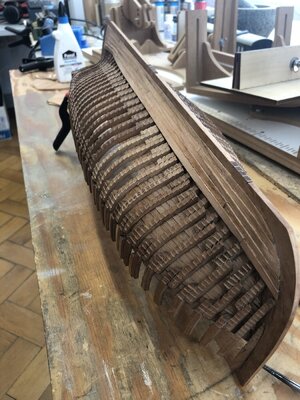
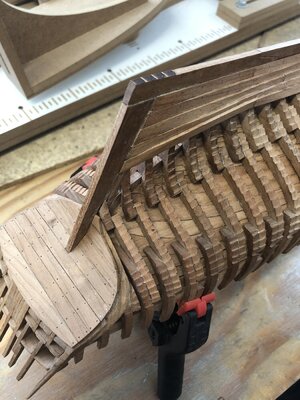
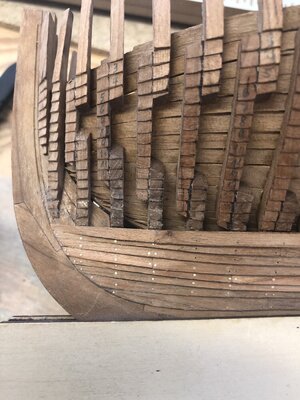
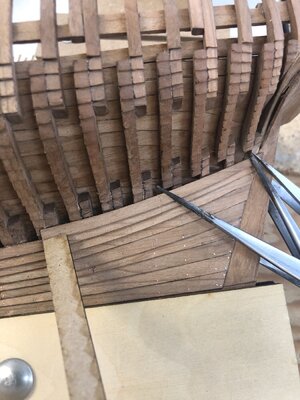
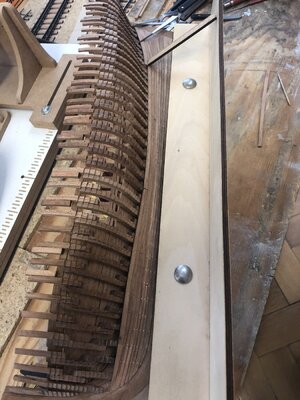


 ? 66 Kerzen oder 66 Maß?
? 66 Kerzen oder 66 Maß?
